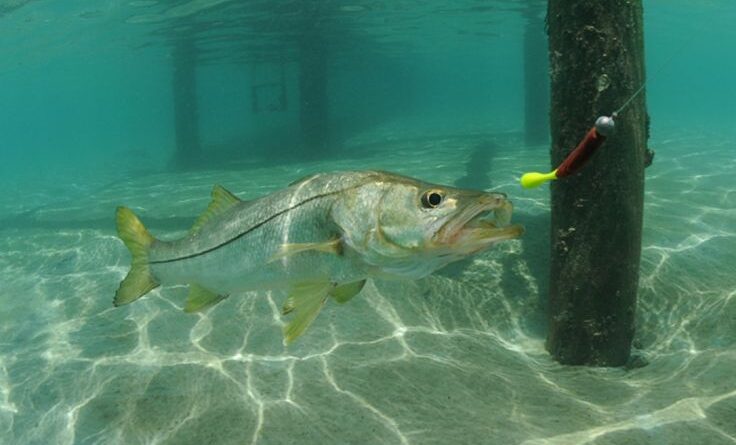Trolling is a highly effective fishing technique that involves trailing bait or lures behind a moving boat to entice fish. Whether you’re a novice angler or an experienced fisherman, mastering the setup of your fishing rod for trolling is essential for a successful and enjoyable fishing experience. In this comprehensive guide, we’ll delve into the intricacies of trolling, covering everything from selecting the right equipment to advanced techniques. Let’s embark on a journey to enhance your trolling skills and elevate your chances of landing the catch of a lifetime.
Understanding the Basics of Trolling
- Choosing the Right Rod and Reel Combo: Selecting a trolling rod and reel combo is the first step. Opt for a medium to heavy-action rod with a sturdy reel that has a smooth drag system. The reel should have a line capacity suitable for the species you’re targeting.
- Selecting the Appropriate Fishing Line: The fishing line plays a crucial role in trolling success. Monofilament and braided lines are popular choices. Choose a line with the appropriate pound test strength based on the targeted fish species.
- Picking the Ideal Trolling Lures or Baits: The selection of lures or baits depends on the type of fish you’re targeting and the water conditions. Consider factors like color, size, and diving depth when choosing lures.
- Utilizing Downriggers and Planer Boards: Downriggers and planer boards are valuable tools in trolling. Downriggers help control the depth of your bait, while planer boards spread your lines horizontally, covering a wider area.
- Understanding Trolling Speeds: The speed at which you troll greatly influences your success. Different species have preferred trolling speeds, so experiment to find the optimal speed for the fish you’re targeting.
Step-by-Step Guide to Setting Up Your Trolling Rod
1. Choose the Right Rod and Reel Combo
Select a trolling rod with the appropriate length and action for the species you’re targeting. Pair it with a trolling reel that matches the rod’s specifications. The reel should have a smooth drag system and sufficient line capacity.
2. Spool the Reel with Quality Fishing Line
Choose a high-quality fishing line that matches the trolling conditions. Monofilament lines are forgiving and have some stretch, while braided lines offer sensitivity and strength. Ensure the line has the correct pound test strength for your target fish.
3. Attach a Quality Swivel and Leader
Connect a sturdy swivel to the end of your mainline. This prevents line twists caused by the rotating motion of trolling. Attach a leader to the swivel, and its length should suit the fishing conditions and the targeted species.
4. Add Trolling Lures or Baits
Select trolling lures or baits based on the preferences of the fish you’re targeting. Consider the water clarity and the depth at which you want to troll. Attach the lures to the leader using appropriate knots, ensuring a secure connection.
5. Incorporate Downriggers for Depth Control
If trolling in deeper waters, consider using downriggers. Attach the downrigger weight to the downrigger cable and deploy it to your desired depth. Attach the fishing line release clip to the weight and connect your lure to the fishing line release.
6. Integrate Planer Boards for Horizontal Spread
For covering a wider area, use planer boards. Attach the planer board to your fishing line using a release clip. As the boat moves, the planer board carries your line away from the boat, creating a horizontal spread.
7. Experiment with Trolling Speeds
Trolling at the right speed is crucial for success. Different fish species have preferred trolling speeds, typically ranging from 1.5 to 3.5 miles per hour. Experiment with speeds until you find what works best for your target species.
Advanced Trolling Techniques for Success
- Adjusting Lure Depths: Use diving planers or adjustable lures to control the depth at which your lures swim. This is crucial for reaching fish at various levels in the water column.
- Implementing Flashers and Dodger Rigs: Flashers and dodger rigs create additional attraction by reflecting light and creating underwater vibrations. Experiment with different colors and sizes to see what entices the fish.
- Fine-Tuning Lure Presentation: Pay attention to the action of your lures. Adjust trolling speed, vary the distance between lures, and experiment with different lure actions to find the most enticing presentation.
- Monitoring Water Temperature and Conditions: Fish are temperature-sensitive, so use a fish finder to locate the preferred temperature range for your target species. Additionally, pay attention to water conditions such as currents and structure.
Maintaining and Storing Your Trolling Equipment
- Rinse and Clean Your Gear: After each trolling expedition, rinse your rods, reels, and lures with fresh water to remove salt and debris. Clean and inspect your gear for any signs of wear.
- Check and Maintain Reels: Regularly check the condition of your reel’s drag system and lubricate it as needed. Ensure that all components are in good working order.
- Store Properly: Store your trolling rods in a secure and dry location. Avoid leaving them in direct sunlight for extended periods, as this can damage the fishing line and weaken its strength.
- Inspect Downriggers and Planer Boards: Inspect downriggers and planer boards for any signs of corrosion or damage. Lubricate moving parts as recommended by the manufacturer.
Conclusion
Trolling is a versatile and productive fishing technique that opens up a world of possibilities for anglers. By carefully setting up your trolling rod and understanding the nuances of trolling, you can significantly increase your chances of a successful catch. Explore cheerfulfisherman.com for a curated selection of top-quality fishing gear and expert advice to enhance your trolling experience. Remember, patience and experimentation are key to mastering the art of trolling.






